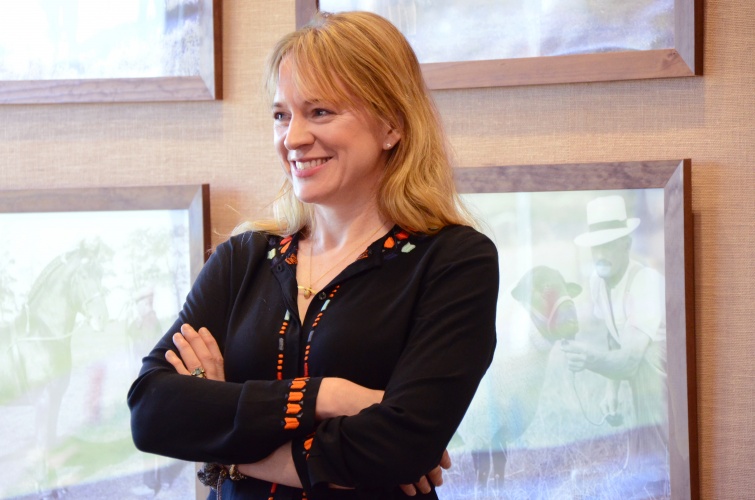Suffragette-inspired school uniforms and colourful coding kits: design in education
Last week, publisher Oxford University Press Education was given a new look by Baxter and Bailey. Now, designers share some of their favourite examples of educational design.

“Higher education is in a bit of a pickle. Universities need to market themselves like never before. But they have a problem, and that’s how to stand out in a marketplace where everyone is selling the same things – teaching and research – and standardisation comes before individuality. Most design in education is characterless and uninspiring. I love the posters Paul Rand designed for the University of California, Los Angeles (UCLA) in the early 1990s. He hated trickery, decoration and trends. His work was all about efficiency and durability, clarity and purpose, simplicity and practicality. Rand’s posters reveal his fascination for visual puns. They’re playful, vibrant and eclectic. UCLA was one of his best clients because, as he would say, ‘I do the job, and they accept it’, according to a book by Steven Heller published in 1999.”

“My own school, a relatively unknown and fantastic girls’ day school in Blackburn, Lancashire embraced its duty to prepare young women for a sometimes hostile working world. I don’t know a single Westholme School alumna who would submit to the glass ceiling. Our colours were purple and green. It made us rather visible to the occasional egg-pelting boy, but it was nothing we couldn’t retaliate against with worse. With this year being the anniversary of women winning the right to vote, I find myself often thinking about the good sense of a school that nurtured determined, capable and ambitious women by dressing us in the colours of suffrage. Although the huge, purple gym knickers were a bit much…”

“Teacher has told me I’m not allowed to nominate the Baxter and Bailey project mentioned in the question above (bah), but luckily I can think of loads more. When it comes to language, it’s hard to beat Pentagram’s powerful, radical and intelligent ‘Let’s change things’ campaign for the University of Sussex. I’ve always loved Blast’s timeless logo for the same institution too. Equally striking language is central to the ‘Dear World…Yours, Cambridge’ campaign by Johnson Banks with Nick Asbury, which brilliantly articulated Cambridge University’s profound impact on the world. The work hoovered-up a bazillion design awards in 2016, so I’m clearly not alone in my admiration for it. But perhaps my absolute favourite example of design in education is something closer to home. In my case, in a cupboard under the telly. I’m thinking here of Kano’s amazing kits that allow kids to build and code their own computers. They look great, are bright, colourful and easy to use, and they open up a world of possibilities for young, engaged children. Top of the class.”

“There was a brilliant meme doing the rounds during the recent series of Blue Planet. The background would be a still taken from the programme showing incredible, newly discovered sea life, with text over the top that read ‘Hey Mr Attenborough, Octonauts covered all this ages ago’. If you haven’t seen Octonauts, it’s a CBeebies animated series about animals traveling around in a submarine saving sea life. The meme is a bit of fun, but it does show how far children’s programming, especially on the BBC, has raised the bar on educational content and creative ways of presenting it. Thanks to Octonauts, Hey Duggee and Andy’s Wild Adventures, my five-year-old can tell you all about the midnight zone below the surface of the ocean, how bees make honey and name more dinosaurs than you can shake a fossil at. If you’re looking for inspirational ways to reach and engage young minds, you can do a lot worse than watching the latest episodes of all the above on CBeebies.”

“I’m a fan of Victorian art critic and theorist John Ruskin, and I’ve always loved the architecture of Oxford’s Natural History Museum that he inspired. Ruskin believed that architecture should reflect the natural world, and nowhere could be more fitting to see this borne out than at this museum. He was particularly against architecture that ‘lied’ – hid its true material or purpose. Reflecting this ideology, the museum uses exposed iron columns that convene into arches over the visitor’s head, revealing its structural skeleton and giving the visitor a natural history lesson before they even start looking at the exhibits.”
-
Post a comment




